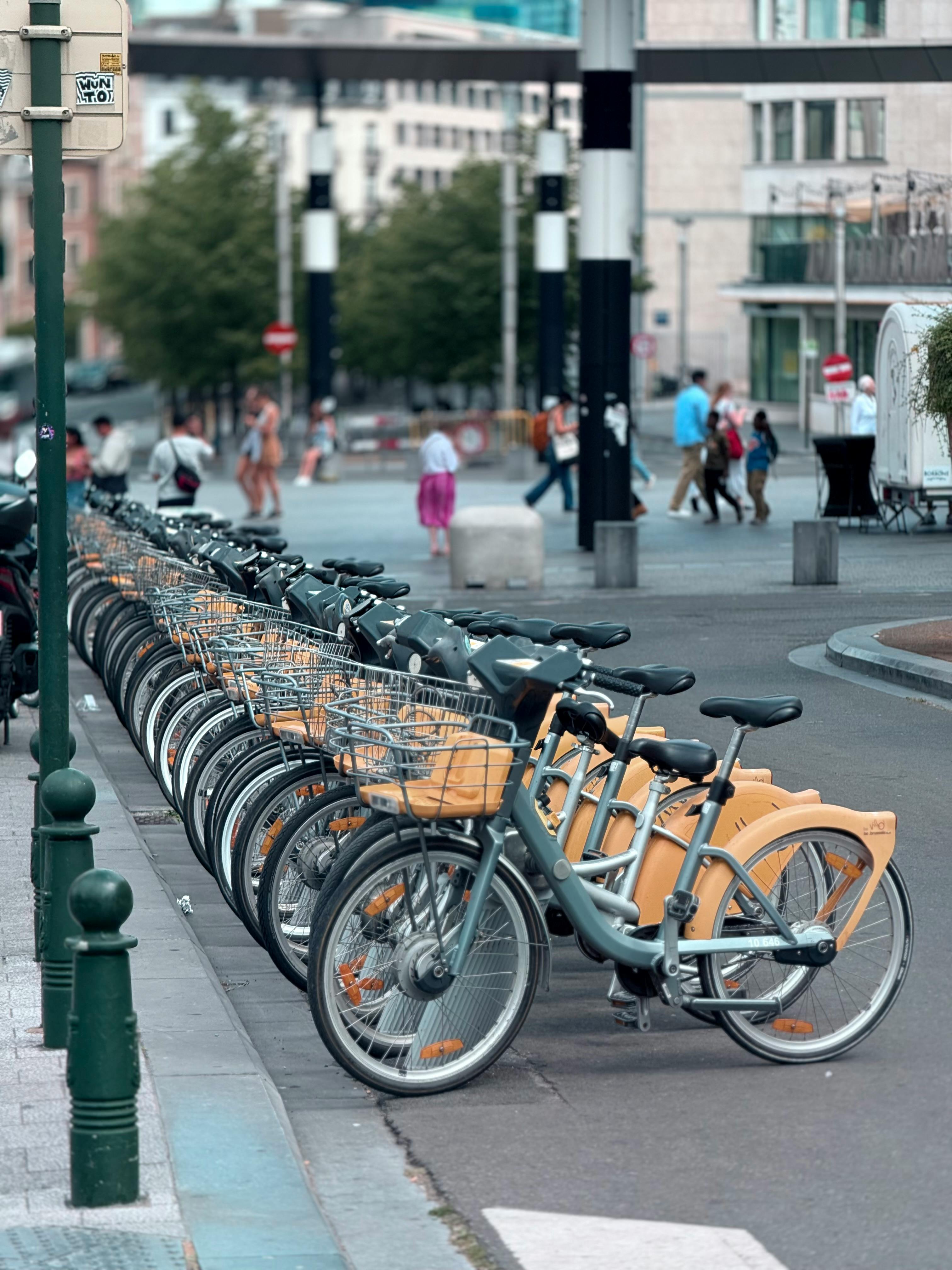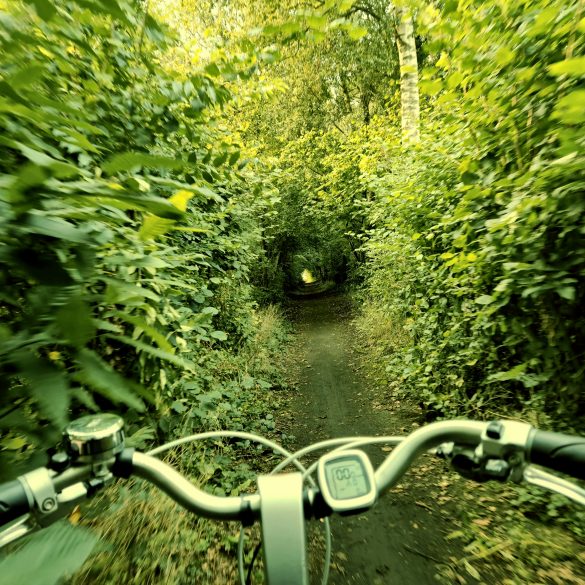Sustainable Travel Tips: Smart Ways to Explore the World Responsibly
Ever stopped to wonder if your adventures abroad are helping—or hurting—the destinations you cherish? You’re not alone. Back when I first started traveling, I hardly thought about environmental impact, let alone sustainability. I just wanted to see the world, sample street food in Bangkok, catch breathtaking sunsets in Santorini, and pile up Instagram-worthy snapshots—pretty much like everyone else these days. But, three years ago, after returning from an eye-opening trip through Northern Vietnam, where locals explained how climate changes affected rice yields right before harvest season, something inside me shifted. Suddenly, the simple act of choosing a reusable water bottle over single-use plastic seemed… not just easy, but genuinely necessary.
“The question is not whether travel can be sustainable, it’s whether we care enough to make it so.”
Frankly, I’ve made my share of mistakes. Overpacked, over-scheduled, sometimes even over-consumed. I won’t claim I’ve got it all figured out. But I’ve learned some lessons the hard way, and what really strikes me is how small tweaks—local food choices, transport swaps, mindful packing—multiply to create real positive impact. Now, as we face issues like overtourism, water scarcity, and fragile ecosystems under pressure, sustainable travel isn’t just a buzzword. It’s an invitation to journey with intent. This article isn’t another guilt trip—think of it as a field guide for navigating the world with both joy and responsibility, blending practical hacks, current facts, and cultural wisdom that have worked for me and thousands of fellow travelers alike.
Why Sustainability Matters in Travel
Let me step back for a moment. In 2024, over 1.4 billion international travelers crisscrossed the globe1. Stunning, right? But the cost isn’t just financial; global tourism accounts for about 8% of total greenhouse gas emissions2. That’s wild. Personally, I used to think buying carbon offsets was enough—now I know it’s just part of the puzzle. Local communities, wildlife habitats, and even cultural traditions are being reshaped by our presence. Some places—think Barcelona, Venice—are grappling with overtourism so intense that city officials set visitor limits3. The more I consider this, the clearer it becomes: responsible travel isn’t optional. It’s a must.
Costa Rica, a world leader in eco-tourism, generates more than 40% of its electricity from hydropower and has set ambitious goals to be carbon-neutral by 2050—a living example that sustainable infrastructure can go hand-in-hand with vibrant tourism4.
Planning Your Trip Responsibly
Okay, let’s think about this. Where do you start? Hint: It’s not about how much you spend—it’s what you prioritize. One thing that trips people up is assuming “sustainable” means “luxury” or “expensive”—couldn’t be further from the truth. Last summer, I discovered a locally-run eco lodge in Guatemala for less than $30 a night, complete with rainwater showers and permaculture gardens. Choices matter. Here are six planning steps that really make a difference:
- Research destinations for sustainability certifications (like Green Globe or EarthCheck).
- Travel off-peak to avoid crowds, reduce pressure on resources, and score better prices.
- Choose accommodations with active environmental and social initiatives.
- Ask tour operators about wildlife protection and ethical practices before booking.
- Check for local volunteer programs—participate only where your skills are genuinely needed.
- Calculate your travel carbon footprint and offset responsibly.
Packing Smart for Sustainability
Confession: I used to pack for “just in case,” ending up with a suitcase full of items I never touched. Packing sustainably isn’t just about what you bring—it’s about what you leave behind. The more I travel, the more I realise minimalism in packing is key to sustainability and sanity.
Here’s my go-to list:
- Refillable water bottle (ditch the disposables!)
- Reusable shopping bag for local markets
- Biodegradable toiletries
- Multipurpose clothing (layer, mix, repeat)
- Portable utensils to avoid single-use plastics
- Local sim card for sustainable navigation—less paper maps
Eco-Conscious Transportation Choices
What gets me every time is how transportation can tilt your carbon footprint—big time. Planes are fast, but their emissions are, let’s face it, massive. According to the International Air Transport Association, a single long-haul flight can produce as much CO2 as a car running for a year5. I used to grab flights for convenience; nowadays, I often opt for trains—even if it takes longer. Buses, ferries, and even rideshares come next. Cycling and walking? Game-changing ways to experience a place slowly and genuinely. Here’s a comparison table based on real-world data:
| Transport Type | Average CO2 per km | Sustainability Rating (1-5) | Best For |
|---|---|---|---|
| Flight | 0.245kg | 1 | Long distances |
| Train | 0.041kg | 5 | Regional, cross-country |
| Car (solo) | 0.192kg | 2 | Local trips |
| Bus | 0.027kg | 4 | Urban, rural |
| Bike/Walk | 0kg | 5 | Urban, close distances |
Sound familiar? That time you saw locals walking, biking, hopping on the metro—it’s not just easier on the planet, it’s how travel becomes immersive. On second thought, sometimes I get ahead of myself and dream of train journeys across landscapes—slow routes teach patience and presence I never found at 30,000 feet.
Supporting Local Communities
Ever notice how tourist dollars land in big hotels and chain restaurants, often bypassing local families? I’ll be completely honest: I used to pick the “safe” chain options in unfamiliar places, thinking I was helping local employment. Actually, local-owned businesses benefit far more from your presence, especially those committed to sustainable practice6. So, here’s what’s worked:
- Eat at local restaurants—ask for farm-to-table menus
- Book guides and tours run by native residents, especially those with cultural heritage certification
- Stay in family-run guesthouses or ecolodges
- Shop crafts and gifts directly from artisans
- Learn basic phrases in the local language
- Choose experiences that respect land and traditions
Clients always ask, “Is responsible travel actually affordable?” I’ve found prices for locally-sourced meals or homestays are often more reasonable than chain alternatives, plus you take home stories instead of souvenirs.
Cultural Respect & Social Responsibility
Imagine landing somewhere and instantly blending in, right? Rarely happens. Honestly, I reckon most travelers (myself included) misjudge local norms at first—dressing up for temples in Thailand, greeting in Moroccan tea shops. You learn quick, if you’re open. Respecting cultural traditions, supporting social equity, and not making a spectacle out of sacred rituals are central to sustainable travel7. Colleagues frequently debate: How much research is enough? From my experience, here’s a simple list:
- Read up on local customs and etiquette before visiting
- Ask permission before taking photos, especially of people
- Support fair-wage initiatives in your purchases
- Avoid exploitative experiences—animal shows, orphanage visits
- Embrace meaningful exchange; don’t treat cultural encounters as spectacle
The more I practice this, the more honest conversations happen. That’s where genuine connection, learning, and healing occur.
“Sustainable travel isn’t about how little you impact a place—it’s about how much you enrich it, and let it enrich you.”
Seasonal Timing & Weather Considerations
Here’s the thing: What season you travel can make or break both your footprint and your experience. One mistake I made years ago? Showing up at Yosemite during peak summer. The crowds, the traffic, the strain on water lines—hardly felt magical. Many destinations thrive in shoulder seasons—think late spring in Japan, early autumn in Portugal. On top of saving money, fewer crowds mean less stress on local infrastructure and better, more personal experiences8.
- Research climate trends—consider off-peak travel for sustainability
- Check for seasonal festivals—timing matters for authentic experience
- Pack adaptable, weather-appropriate clothing
- Watch for local water shortages and avoid travel during droughts
- Flex dates for lower emissions/public transport use
What puzzles me sometimes is how climate unpredictability introduces new challenges—like longer monsoon seasons or wildfire risk that didn’t exist a decade ago. The more flexible you are, the better for the planet and your sense of adventure.

Budgeting for Sustainable Travel
Let me think about this for a second: does “eco” have to mean “expensive”? On second thought, sustainable travel can actually help you save. Previously, I believed only high-end travelers could afford carbon offsets or organic farm retreats. Turns out, simple swaps work. Riding local buses instead of taxis, shopping markets for fresh eats instead of packaged snacks, staying longer in one place—all add up to saving cash while boosting sustainability. Honestly, the biggest expense is usually flights; so, if you can learn to love slow travel, your wallet (and the environment) will thank you.
| Sustainable Budget Tip | Average Cost Impact | Environmental Benefit | Personal Experience |
|---|---|---|---|
| Local transit | -40% transport cost | Lower CO2 | Easy navigation in Seoul, saved $120/month |
| Homestay | -30% vs. hotels | Direct benefit to locals | Warm hospitality in Rajasthan |
| Local food markets | -25% food cost | Fewer food miles | Discovered incredible vegan options in Berlin |
| Carbon offsets | +5% per flight | Mitigates travel impact | Learned to choose Gold Standard projects |
Quick Actions for Immediate Impact
Here’s what I’ve learned—sometimes, the smallest act creates outsized results. Years ago, I started using less water in showers; last month, I skipped disposable utensils during a three-day festival in Croatia. The numbers add up: Reusing one bottle per trip can avoid five pounds of plastic waste9. These quick actions work, regardless of where or how you travel:
- Skip daily linen changes — conserves water, reduces chemical runoff
- Turn off hotel lights and AC/heat when heading out
- Say “no, thank you” to single-use plastics
- Opt for digital tickets and maps
- Share taxis or rides when possible
- Avoid buying wildlife products, shells, coral, hardwood souvenirs
Advanced Strategies: Deepening Sustainable Impact
Looking ahead, I’m still learning about cutting-edge travel technologies—from solar-powered eco-resorts popping up in Bali, to smart apps that help you track and offset your emissions in real time11. Realise that advocacy is power: sharing your positive experiences with others, supporting pro-sustainability travel policies, and choosing businesses with transparent sustainability reports push systemic change. One more thing—be open to edgy ideas: regenerative travel (leaving destinations better than you found them), and citizen science trips (contributing to local environmental studies) are on the rise12. I go back and forth about how much individual actions matter, but seeing local change unfold has convinced me, by and large, that travelers do make a difference.
“We don’t inherit the earth from our ancestors, we borrow it from our children.”
Case Studies: Impact in Action
Back in 2019, a friend joined a community coral restoration effort in the Philippines. After just two weeks, she and local villagers replanted more than 400 coral fragments. The result? Return of fish species previously lost, and local tourism revenue grew by 25% after travelers heard about the project13. Another favourite: In Sweden, “flygskam” or “flight shame” prompted an uptick in long-distance train travel, reducing the country’s domestic airline emissions by 9% in a single year14.
- Coral restoration, Philippines — boost to biodiversity & economy
- Train travel surge, Sweden — cultural shift, emissions drop
- Rewilding safaris, South Africa — empowered local guides
- Zero-waste festivals, UK — reduced landfill, increased awareness
What’s the takeaway? Individual choices ripple outward—travelers inspire change simply by showing what’s possible.
Looking Ahead: The Future of Sustainable Travel
Here’s the thing though—sustainable travel isn’t some static set of “rules.” It’s evolving constantly, shaped by new technologies, changing climates, and the social movements of our times. As of right now, we’re seeing major hotel chains piloting zero-waste rooms, tour companies offsetting all trip emissions, and local governments collaborating on crowd control and conservation funding15. Meanwhile, more individuals like you and me are calling out greenwashing, demanding proof and transparency. The more the travel industry innovates—and the more travelers ask tough questions—the better.
Honestly, my thinking has evolved from “am I making a difference?” to “how can I multiply positive impact?” That’s why I keep learning—through podcasts, webinars, chatting to local hosts, and reading government reports that break down what’s working (and what isn’t). The next few years? Expect radical change. AI-powered booking platforms may help identify truly sustainable options, while blockchain technology could soon verify carbon offset claims16. The key is to stay skeptical, stay curious, and always ask—who benefits most from every travel choice?
Actionable Summary: Your Field Guide for Sustainable, Responsible Exploration
- Choose destinations with authentic sustainability credentials
- Travel in off-peak seasons and use eco-friendly transport
- Support local businesses, respect cultural traditions, and avoid exploitative practices
- Pack minimally and responsibly, reuse and refuse disposables
- Budget smart and think community first—not just cost
- Champion new technologies, share experiences, and demand transparency
Concluding Thoughts: My Ongoing Journey
Let me clarify: no one does this perfectly. The more I travel, the more I get that every journey is a learning process. Sometimes I need to revise my earlier points; sometimes, I find myself backtracking, adjusting what sustainability means based on changing local realities. But one thing remains steady—when you show up with respect and curiosity, you’re never just a tourist. You become a part of something bigger—a global community of thoughtful explorers. If you’re reading this, you’re already on the path. Keep asking questions, sharing experiences, and challenging the status quo. Believe me, this movement is growing because of travelers like you.
References



